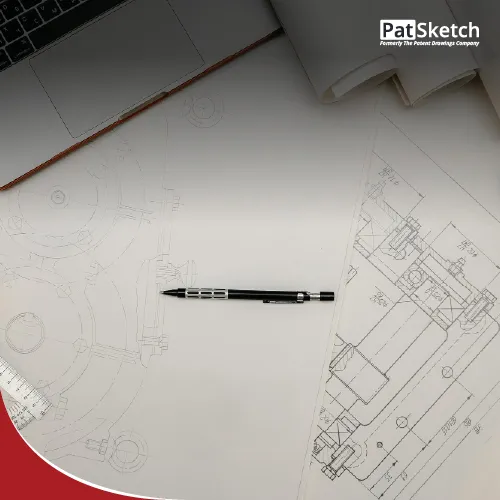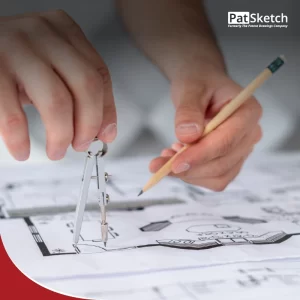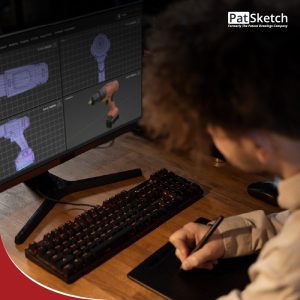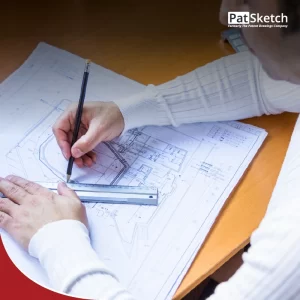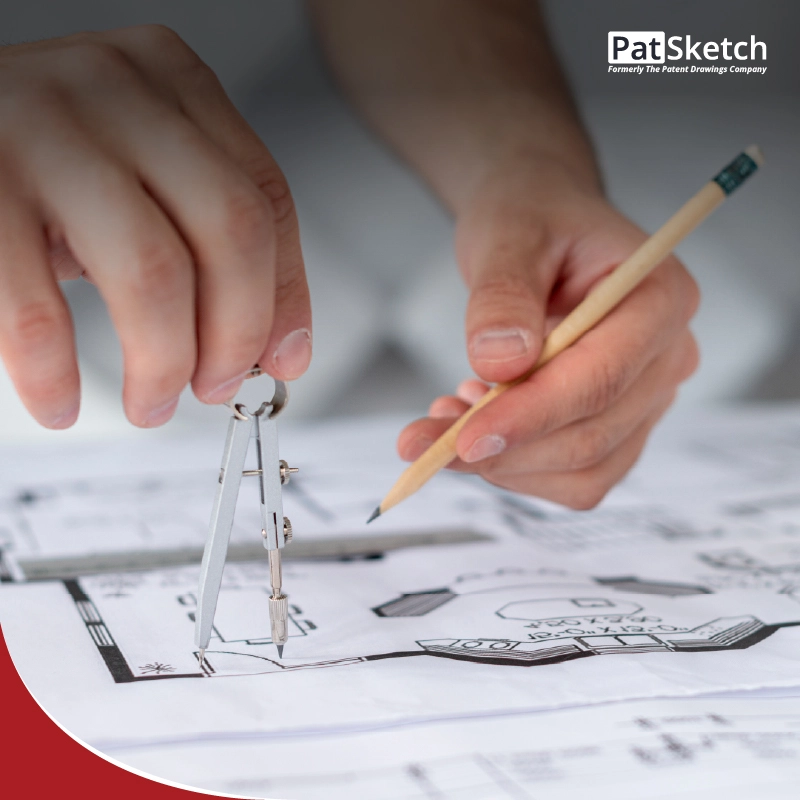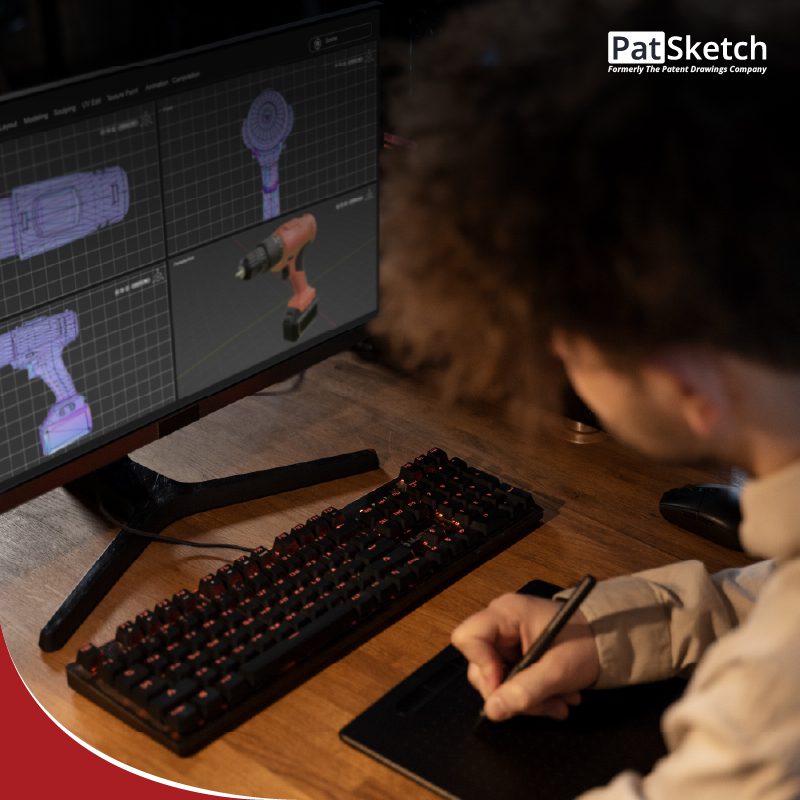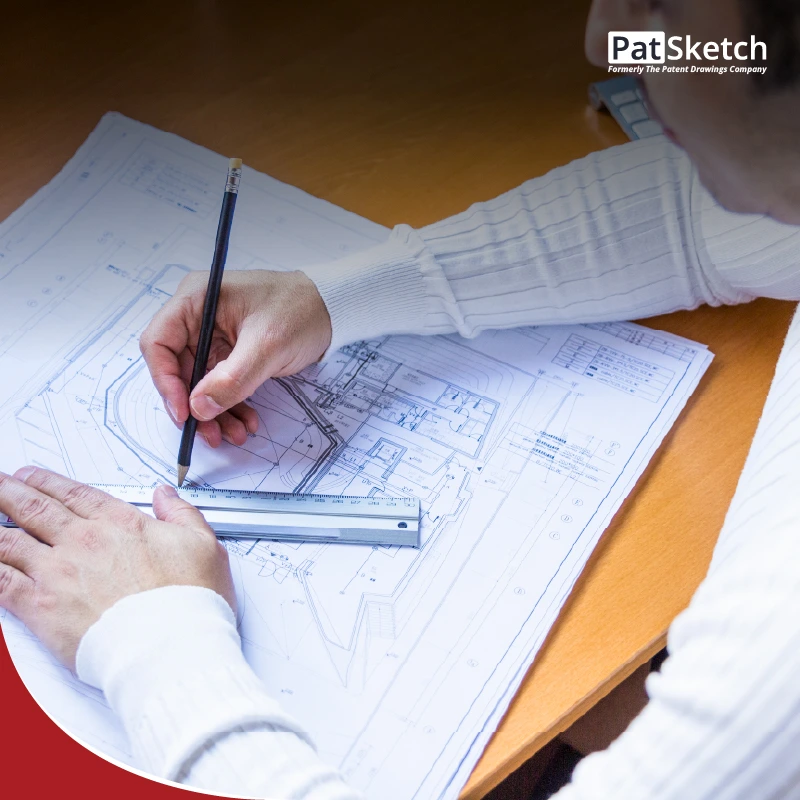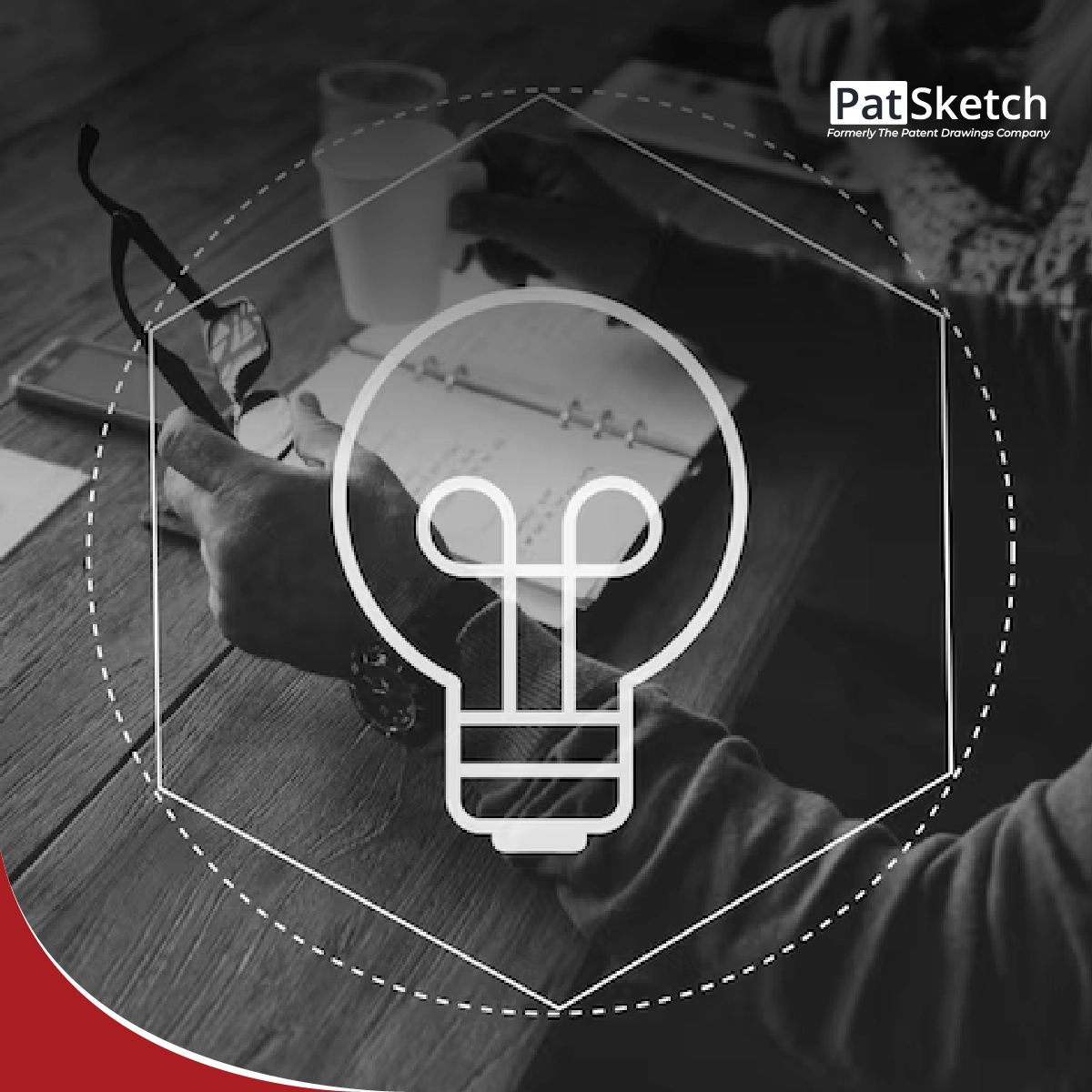When submitting a patent application, the clarity and completeness of the drawings play a crucial role in conveying the invention’s structure and functionality. To ensure a thorough visual representation, patent drawings often incorporate a variety of views, such as perspective, isometric, top, bottom, side (elevation), sectional, exploded, and partial views.
Each of these views serves a unique purpose, helping to illustrate different aspects of the invention and providing patent examiners with a comprehensive understanding of its design and operation.
Various Views of Patent Drawings
Orthogonal and Perspective Views
Though patent professionals don’t need to submit a perspective view of a design, still, it is recommended as it allows examiners to see the three-dimensional view of the design in an application. If a perspective view is submitted, the surfaces shown normally won’t be required to be illustrated in other views.
Isometric Views
A pictorial representation of an object in which all three dimensions are drawn at full scale rather than foreshortening them to the true projection is called an Isometric view. An isometric drawing looks like an isometric projection but all its lines parallel to the three major axes are measurable.
Sectional Views
A sectional view can clearly bring out elements of the design. A sectional view presented to show functional features or interior structure is called as Sectional view.
Duplicate Views
If the left and right sides of a design are identical or a mirror image, a view should be provided for one side and a statement made in the drawing description that the other side is identical or a mirror image.
Exploded Views
If your design has parts that are separable during normal use, you may include an exploded view.
Plain and Unornamented View
A view of any side of a design, which is plain and unornamented, such as the flat bottom of a speaker, could help the examiner get the real feel of your design.
Flat Objects
A thin and flat object, such as a quilt, or an embossed design is also used to demonstrate the front and rear view of an object.
Conclusion
However, one of the problems that an inventor faces while creating a design patent illustration is the attempt to use non-US drawings. Patent office other than the USPTO, like EPO, WIPO, and CIPO, allows a wide range of types of drawings, including grayscale and photographs. Such drawings, however, are almost certain to be rejected by the United States Patent and Trademark Office. The only drawings that USPTO will accept are pure black and white line drawings.
Viewing the complexities involved in a patent drawing, it’s important to outsource patent illustration services to firms that are professionals and have been working in the field of patent illustration for a longer period. With this, you can reduce the chances of getting your drawings rejected by the respective patent office.
PatSketch
PatSketch is a leading provider of professional patent drawing services, specializing in creating accurate and PTO-compliant illustrations. Whether it’s complex utility patent drawings services requiring detailed sectional and exploded views, or precise design patent drawing services showcasing multiple perspectives, our expert team ensures every angle of your invention is captured with clarity. Trust PatSketch to deliver drawings that meet global patent office standards, enhancing both the visual and legal strength of your application.

